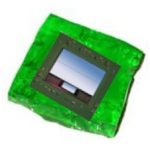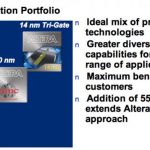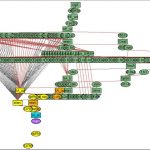I never understood when I was a kid how ‘the Blob’ could actually catch someone but it sure did. It caught the unsuspecting, the off guard. I mean you’d have time for a soda and shower if you saw it on your road. And no, your manager is not the Blob; don’t think like that, it’s always his boss. The blob comes to consume the worker who was unaware… Read More
Tag: altera
TSMC and Xilinx on the FinFAST Track!
The power of the fabless semiconductor ecosystem never ceases to amaze me. On one hand you have the Intel backed press crowing about Intel stealing Altera from TSMC. On the other hand you have Xilinx and TSMC crowing about a new ‘one-team’ approach. If you are interested in the real story you’ve come to the right place.
“Altera’s… Read More
Which is the best FPGA – Xilinx
Your corporate training will teach you there is no such thing as stereo types and they are bad, naughty. We all know they are true; it’s just some companies now of days try to force the worker bees to do a flash erase and drop your brain at the door. I never participated in that and as you can imagine it went very well. Dilbert is true…
I am … Read More
Altera, Intel, TSMC, ARM: the Plot Thickens
Vince Hu of Altera presented us her at the GlobalPress Electronics Summit on their process roadmap. Since just a month or two ago they announced that Intel would be their foundry at 14nm, everyone wanted to get a better idea of what was really going on.
At 28nm, Altera use 2 processes, TSMC 28HP (for high end Stratix-5 devices) and TSMC… Read More
IC Test Debug at Altera
My background is IC design engineering, so it’s always a delight to talk with another engineer on their chip challenges. Today I spoke by phone with Sucharita Biswas, a Senior Hardware Engineer at Altera involved in IC test debug for FPGA devices.
Visual Debugging at Altera on Billion-Transistor Chips
My first job out of college was doing transistor-level circuit design, so I’m always curious about how companies are doing billion-transistor chip design and debug these days at the FPGA companies.
I spoke with Yaron Kretchmer,he works at Altera and manages the engineering infrastructure group where they have a compute… Read More
RTDA at Altera
I talked to Yaron Kretchmer of Altera to find out how they are using RTDA’s products. I believe that Altera are the oldest customer of RTDA, dating back over 15 years, originally used by the operations team around the test floor before propagating out in the EDA and software worlds more recently.
Altera use two RTDA tools, LicenceMonitor… Read More
Intel and Altera Sign on for 14nm
The announcement today that Intel will be a Foundry for Altera at 14nm is a significant turning point for the Semiconductor Industry and Intel’s Foundry fortunes of which the full ramifications are not likely to be understood by analysts. As a long time follower of Intel and a former co-founder of an FPGA startup (Cswitch), it has… Read More
Modeling TSV, IBIS-AMI and SERDES with HSPICE
The HSPICE circuit simulator has been around for decades and is widely used by IC designers worldwide, so I watched the HSPICE SIG by video today and summarize what happened. Engineers from Micron, Altera and AMD presented on how they are using HSPICE to model TSVs, IBiS-AMI models and SERDES, respectively.… Read More
The logic of trusting FPGAs through DO-254
Any doubters of the importance of FPGA technology to the defense/aerospace industry should consider this: each Airbus A380 has over 1000 Microsemi FPGAs on board. That is a staggering figure, especially considering the FAA doesn’t trust FPGAs, or the code that goes into them.… Read More











